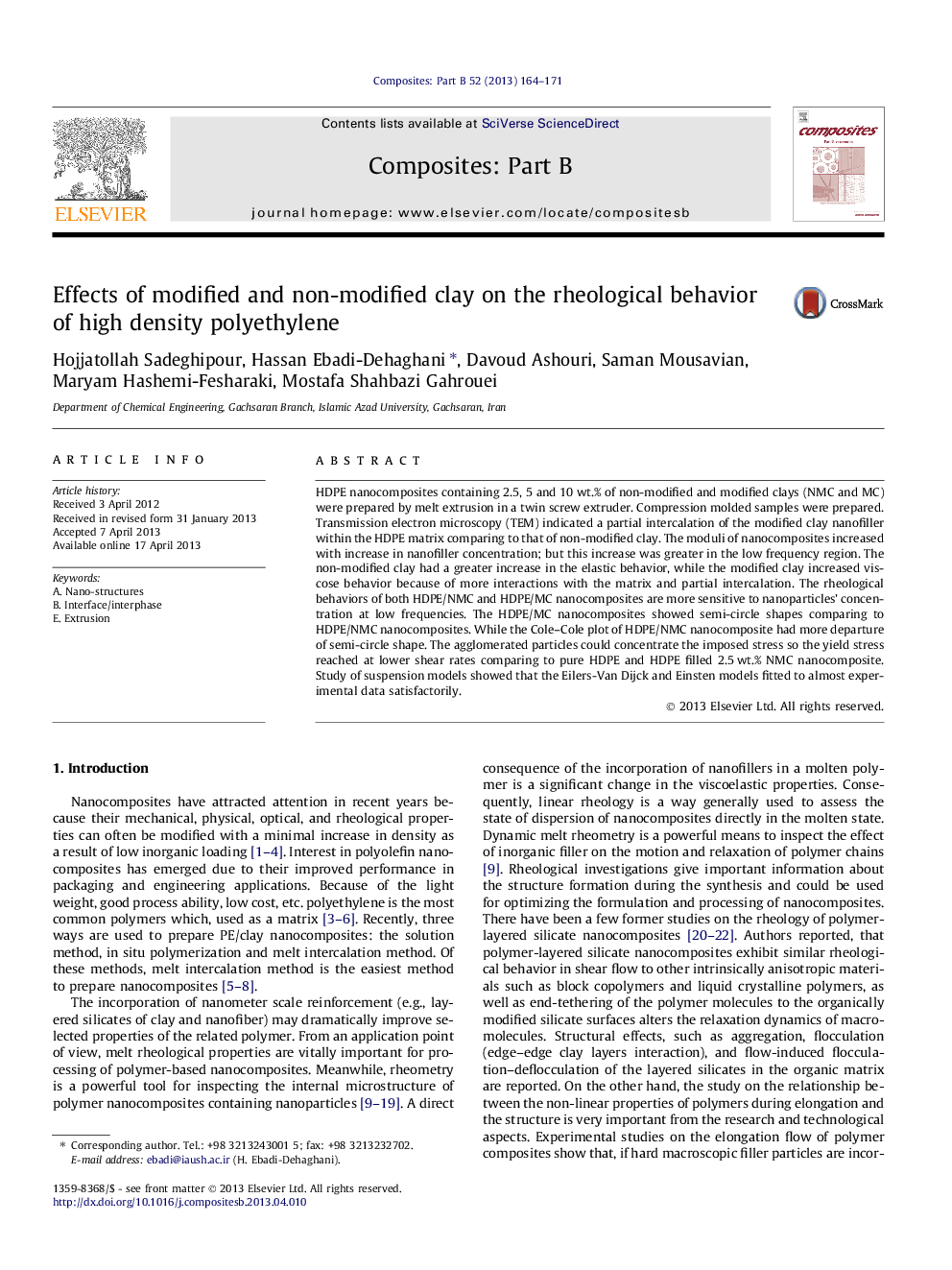| Article ID | Journal | Published Year | Pages | File Type |
|---|---|---|---|---|
| 7213796 | Composites Part B: Engineering | 2013 | 8 Pages |
Abstract
HDPE nanocomposites containing 2.5, 5 and 10Â wt.% of non-modified and modified clays (NMC and MC) were prepared by melt extrusion in a twin screw extruder. Compression molded samples were prepared. Transmission electron microscopy (TEM) indicated a partial intercalation of the modified clay nanofiller within the HDPE matrix comparing to that of non-modified clay. The moduli of nanocomposites increased with increase in nanofiller concentration; but this increase was greater in the low frequency region. The non-modified clay had a greater increase in the elastic behavior, while the modified clay increased viscose behavior because of more interactions with the matrix and partial intercalation. The rheological behaviors of both HDPE/NMC and HDPE/MC nanocomposites are more sensitive to nanoparticles' concentration at low frequencies. The HDPE/MC nanocomposites showed semi-circle shapes comparing to HDPE/NMC nanocomposites. While the Cole-Cole plot of HDPE/NMC nanocomposite had more departure of semi-circle shape. The agglomerated particles could concentrate the imposed stress so the yield stress reached at lower shear rates comparing to pure HDPE and HDPE filled 2.5Â wt.% NMC nanocomposite. Study of suspension models showed that the Eilers-Van Dijck and Einsten models fitted to almost experimental data satisfactorily.
Related Topics
Physical Sciences and Engineering
Engineering
Engineering (General)
Authors
Hojjatollah Sadeghipour, Hassan Ebadi-Dehaghani, Davoud Ashouri, Saman Mousavian, Maryam Hashemi-Fesharaki, Mostafa Shahbazi Gahrouei,
